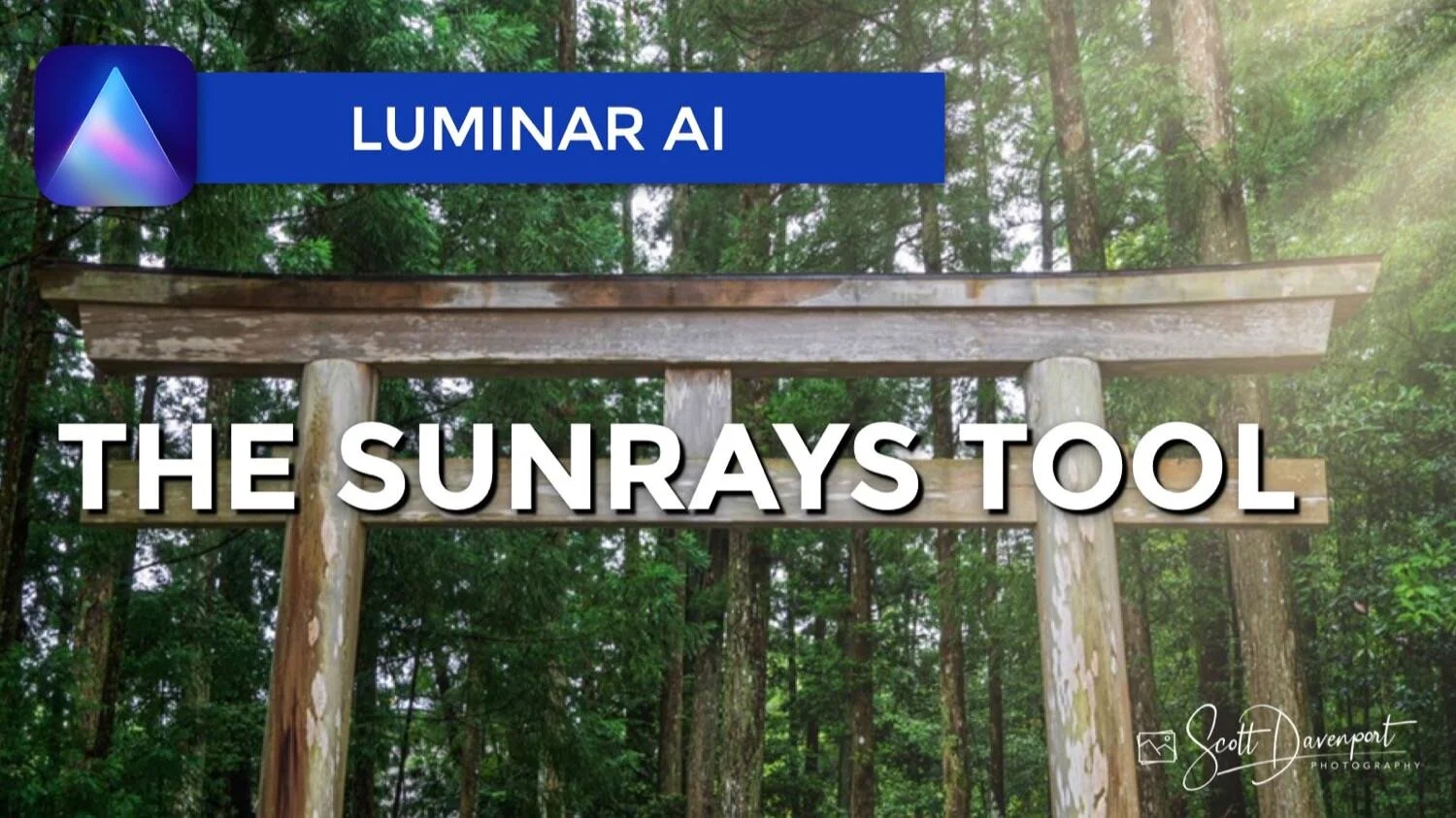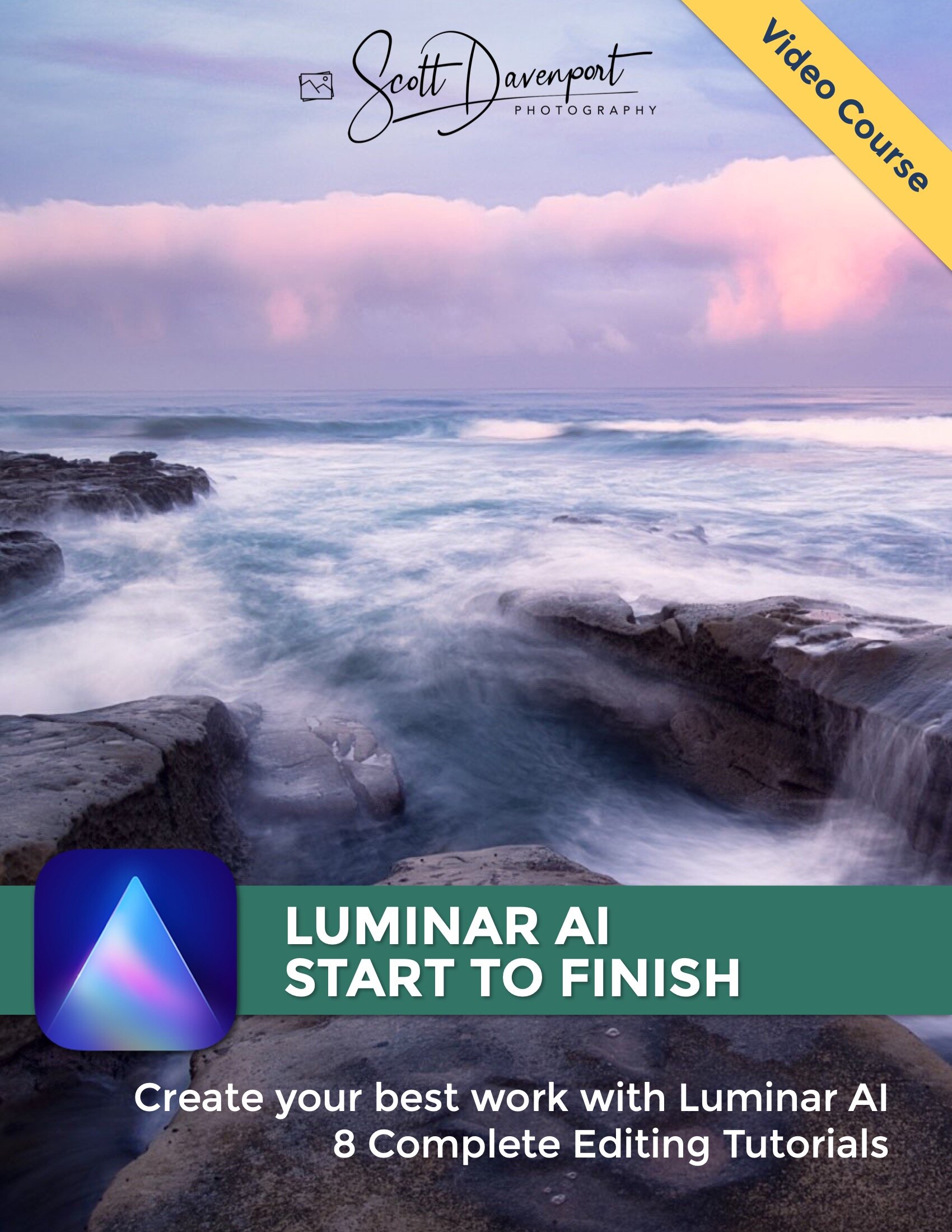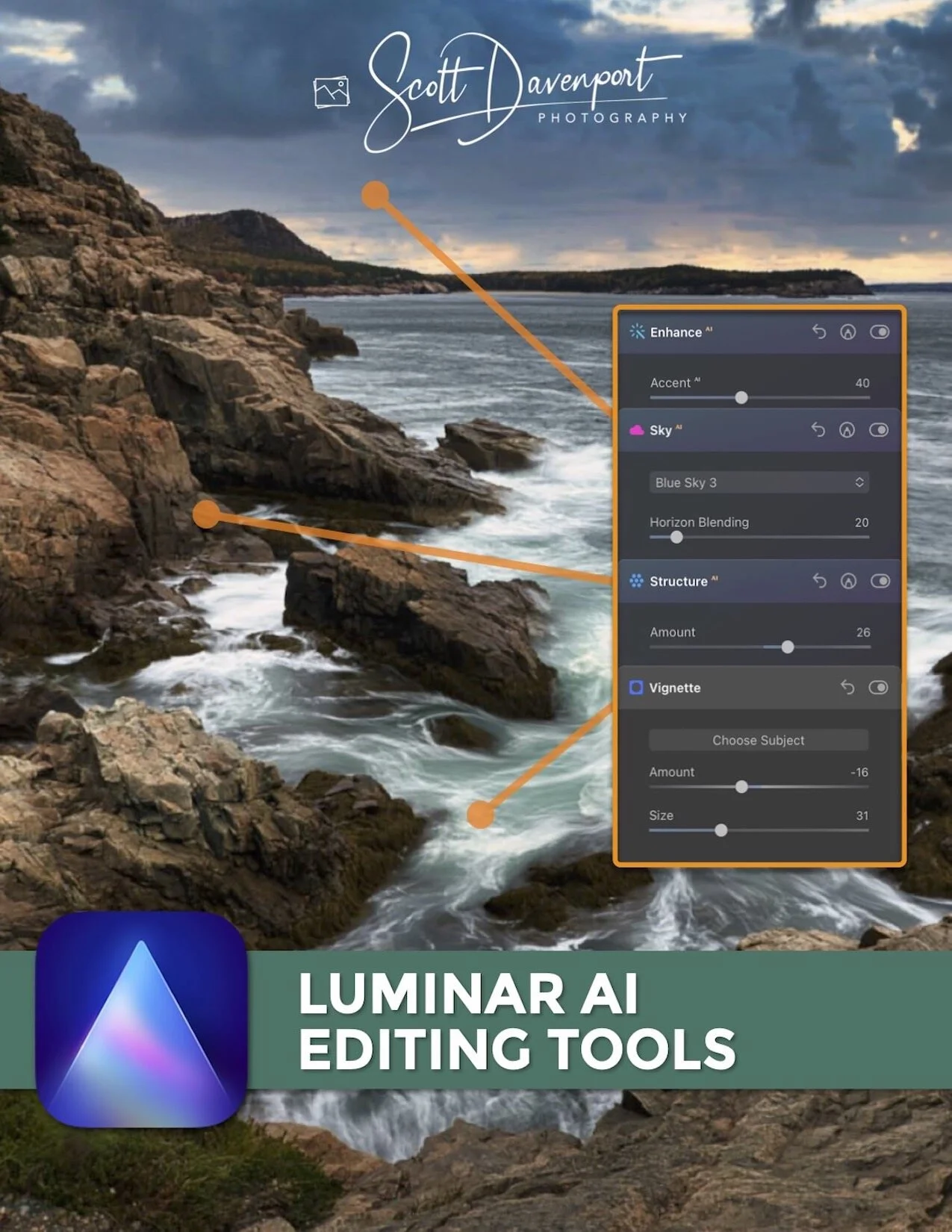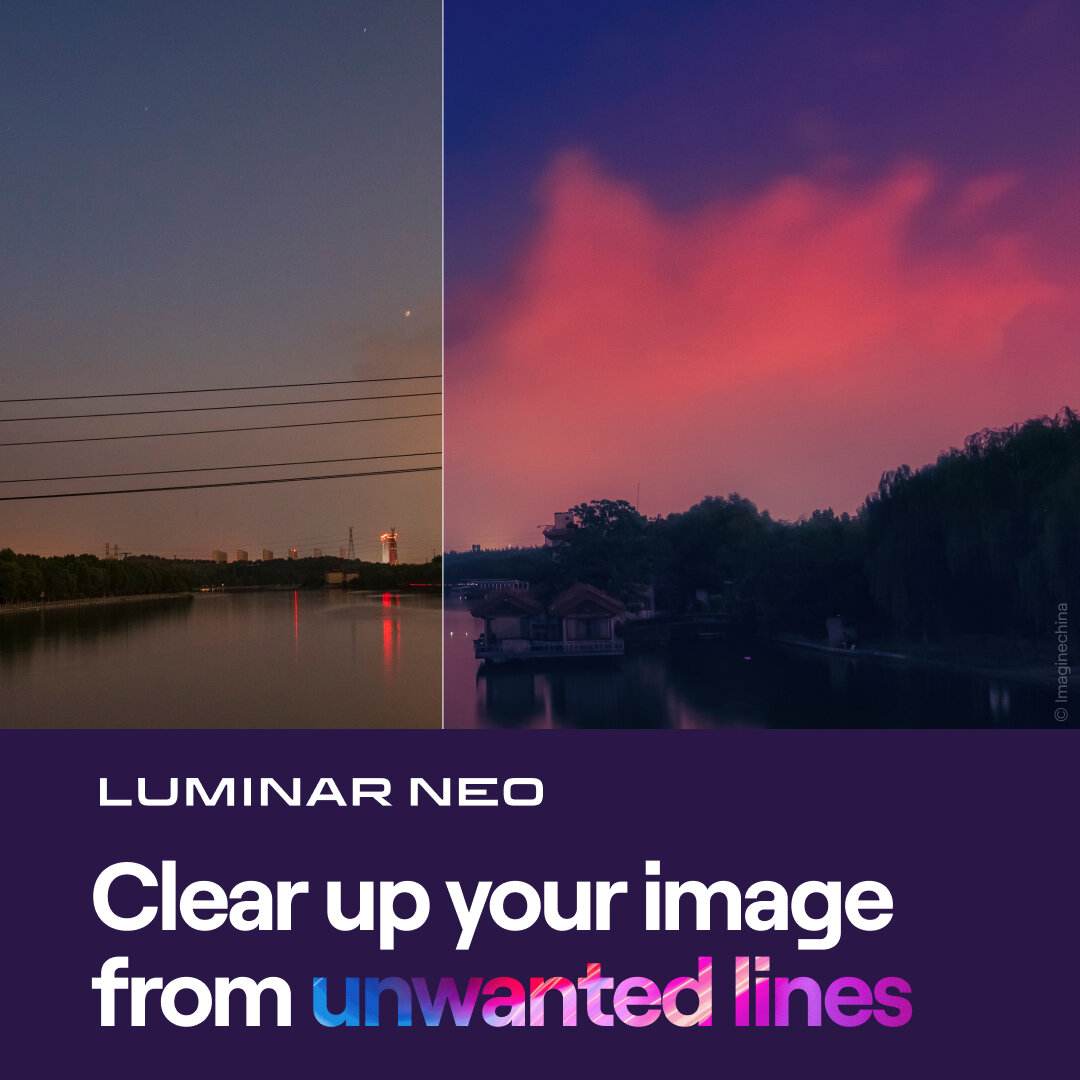Adding Sunbeams With The Sunrays Tool - Luminar AI
If you are trying Luminar AI or upgrading from a prior version, please consider using my affiliate link. There is no extra cost to you and it helps support Luminar AI tutorials like this one. Ready to buy? Use the offer code SDP10 at checkout and Save US$10!
Accent the lighting in your landscapes with the Sunrays tool in Luminar AI. Sunrays adds everything from a soft, warm glow to a set of sunbeams that trickle through the elements in your photo. There is some AI power behind this tool, too. Sunrays understands the different elements in your photo and filters sunbeams through clouds and trees for a natural yet dramatic accent.
Like many of the AI tools we have in Luminar AI, the photographer should exert some fine-tuning on the final look of the effect. Sunrays is no different. This article explains the various controls so you can get the most out of the Sunrays Tool.
The Sunrays Tool Main Controls
There are a lot of controls in the Sunrays tool - and that’s good! We photographers like controls. The main sliders for the Sunrays tool are in the top section. Start your workflow with the Place Sun Center button. Click that and move the pin on your photo to where you want to place the center of the sun. As you move the pin around your image, the sunbeams hide and show based on the elements in your photo. The AI understands things like trees, buildings, and houses and lets the sun “hide” behind these objects. Also, pay attention to the natural light in your photo and place the sun to work with any directional shadows already in your photo. You want your blended sun to look clean and realistic.
Pro tip: Keep the Place Sun Center button active while you adjust the sliders. Repositioning the sun center often calls for refinements to the tool settings.
Once the sun is positioned, use the other controls to refine the look.
Amount: The overall “volume” of the Sunrays. This control tempers or boosts the cumulative look of all the other slider adjustements.
Overall Look: Set how much or how little of the sunlight permeates the scene. This is similar to relighting sliders in other AI tools in Luminar AI.
Sunrays Length: Control how far from the sun’s center into your photo the sunbeams reach.
Penetration: Set how little or how much of the sun and its beams are visible.
In the example below, notice the sun placed on the center of the Japanese gate looks, well, very awkward. The AI understands things like trees, people, and skylines… not so much about Japanese gates. Also, the Penetration slider is pushed a little higher, forcing the sun to be visible. This is great for educational articles like this one, but it’s not a good choice for a natural looking sunbeam effect!
The main controls for the Sunrays Tool sets the position of the sun, scene relighting, and how much the sunbeams penetrate into your photo.
Refining The Sun And Its Rays
The remainder of the sections in the Sunrays Tool give you a lot of control over the characteristics of the sun center, its rays, and its color temperature. There are three other sections, each with its own sliders.
The sliders in Sun Settings control the sun center itself:
Sun Radius: Control how large or small the sun itself is. Low numbers are closer to a point of light.
Sun Glow Radius: Set the size of the sun’s glow.
Sun Glow Amount: Set the intensity of the sun’s glow.
The Rays Settings section controls the sunbeams:
Number Of Sunrays: Set the number of sunbeams. If you are after a natural look, think about the depth of field of your photo when choosing the number of rays. A photo with a shallow depth of field would not naturally have a massive sunburst effect.
Randomize: Randomly shifts the look and orientation of the sunrays based on the position of other sliders.
Pro tip: Use the Randomize slider so your sunrays don’t look like every other photographer using Luminar AI.
The Warmth section sets the warmness or coolness of the sun and its rays:
Sun Warmth: Set the temperature of the sun (the center)
Sunrays Warmth: Set the temperature of the sunrays
Pro tip: Keep the two warmth sliders reasonably close together for a natural looking effect.
Use the sliders in the Sun Settings area of the Sunrays Tool to control the size and glow of the center of the sun.
Set the number of sunrays with the sliders in the Rays Settings section of the Sunrays tool.
Fine tune the warmth of both the sun center and its rays with the sliders in the Warmth section of the Sunrays Tool.
Position The Sun Out Of Frame
A different style of look you can create with the Sunrays tool is an off-frame glow of sunshine. You can drag the Place Sun Center button outside of the boundary of your photo. I like to use this look with a lower number of sunrays and high Penetration value to create a warm “wall of light” glowing into a photo. The Sunrays Tool will still consider the objects in your photo when creating beams. If you are after a singular source of uniform warm tones, that look is better suited for the Local Masking tools.
You can position the sun outside of the photo to create off-camera directional lighting.
How strong or how subtle you want to make your sunrays is up to you. I’m a fan of small, subtle effects like the example below. Watch the video with this article to see how I work with the Sunrays tool from start to finish. The path to a final sunbeam effect is usually not a top-to-bottom run down the sliders.
Whatever your taste, the Sunrays Tool gives you the controls you need to dial in the perfect accent for your images.
Torii In Wakayama
Contact Scott to commission a print or license this image.













